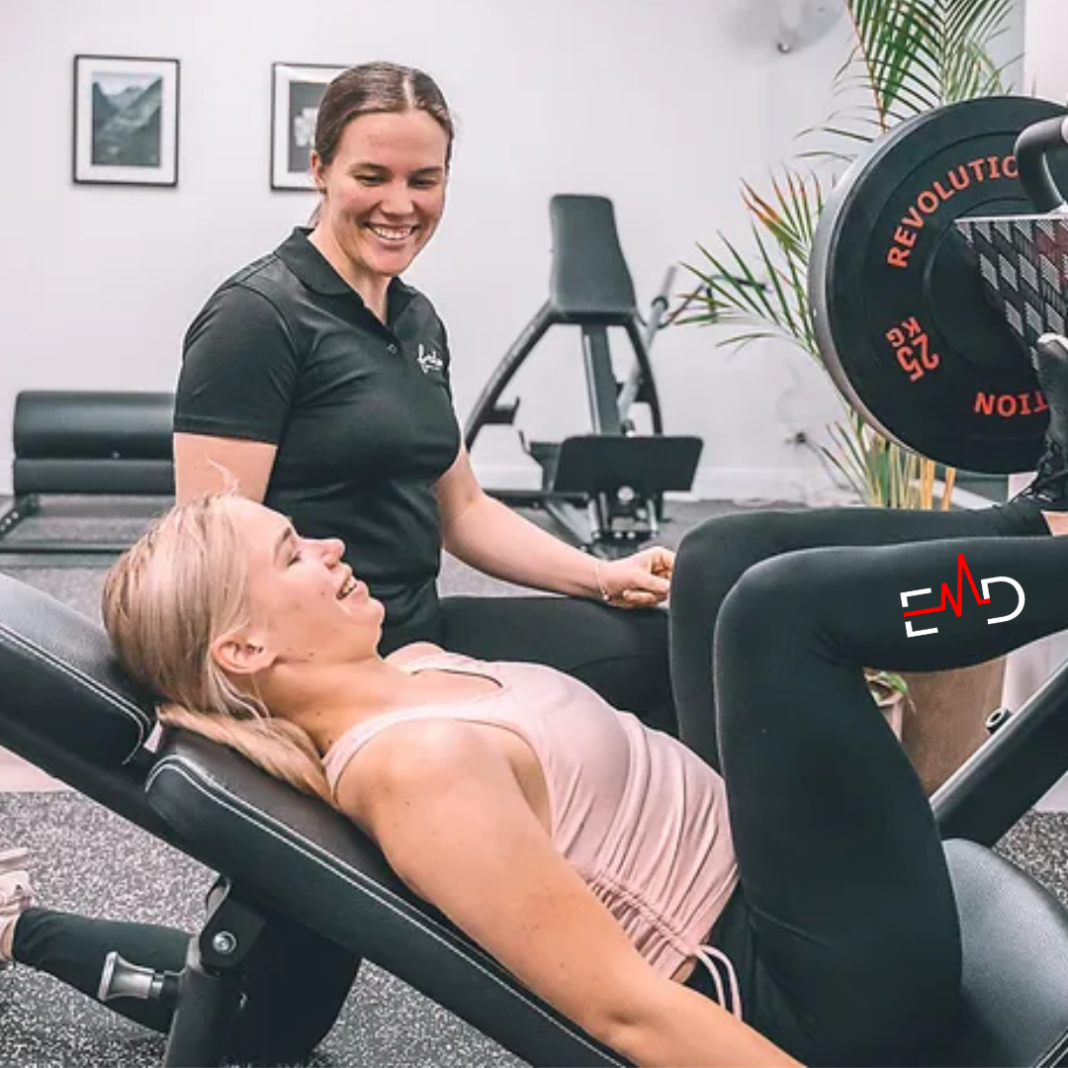Exercise Daily – In fitness, pursuing progress often leads individuals to believe that the harder they push themselves, the better the results. However, this approach can be counterproductive, leading to burnout, injuries, and suboptimal outcomes. The key to effective training lies not in sheer effort but in training smarter, not harder. This paradigm shift emphasizes efficiency, optimizing workouts to maximize results while minimizing time and energy expenditure.
Embracing the principle of training smarter involves adopting a holistic approach encompassing various aspects of exercise, including exercise selection, programming, technique, recovery, and nutrition. By understanding the science behind exercise and applying evidence-based principles, individuals can design workouts tailored to their specific goals, abilities, and limitations. This approach not only enhances the effectiveness of training but also promotes long-term adherence and overall well-being.
Myth of Harder Equals Better
Regarding fitness, the common belief that pushing harder equates to better results is a persistent myth. Let’s unravel the fallacy and explore why working smarter, not harder, is the key to unlocking your full fitness potential.
1. The Fallacy of Endless Reps
Breaking the Repetition Mindset
Many believe the more reps you do, the closer you reach your fitness goals. However, mindlessly cranking out endless repetitions without focusing on form or intensity can lead to diminishing returns. Instead of chasing quantity, prioritize the quality of your movements.
Quality Over Quantity
Imagine doing fifty squats with improper form versus twenty squats with impeccable form. The latter targets the right muscles and reduces the risk of injury. Smart training emphasizes precision and control over mindless repetition.
2. Overtraining Pitfalls
Recognizing the Signs
Overtraining occurs when the body has insufficient time to recover from intense workouts. Symptoms include persistent fatigue, decreased performance, and increased susceptibility to illness. It’s essential to recognize these signs and adjust your training accordingly.
Importance of Rest and Recovery
Contrary to the “no days off” mentality, rest and recovery are integral to any successful fitness journey. Muscles repair and grow during rest periods, improving strength and endurance. Smart training involves strategically incorporating rest days into your routine to optimize results.
The myth that harder equals better in fitness is a trap that can hinder your progress. Instead, shift your focus to working smarter by prioritizing the quality of your workouts and understanding the importance of adequate rest and recovery. Remember, it’s not about how much you do but how well you do it that makes a difference.

Crafting a Smarter Workout Routine
Now that we’ve debunked the myth of harder equating, let’s delve into the crucial aspect of crafting a smarter workout routine. By tailoring your workouts to your body, setting clear goals, and embracing strategic principles, you’ll unlock the true potential of your fitness journey.
1. Setting Clear Goals
SMART Goals
The cornerstone of a smart workout routine lies in setting Specific, Measurable, Achievable, Relevant, and Time-bound (SMART) goals. Define what you want to achieve, break it down into smaller milestones, and track your progress.
Motivation and Direction
Clear goals motivate and direct your workout routine into a purposeful journey. Having a target keeps you focused and committed, whether it’s weight loss, muscle gain, or overall fitness.
2. Tailoring Workouts to Your Body
Individualized Approach
Recognize that everyone’s body is unique. What works for someone else may not work for you. Tailor your workouts based on your fitness level, preferences, and specific health considerations.
Personalizing Intensity
Smart training involves finding the right balance of intensity. Push yourself, but not to the point of exhaustion. Adjust the difficulty of your workouts to challenge your body without causing undue stress.
3. Embracing Progressive Overload
Gradual Intensity Increase
Progressive overload is the gradual increase of stress on the body during exercise. Rather than jumping into an advanced workout, start with a manageable intensity and progressively increase it. This method prevents burnout and reduces the risk of injury.
Varied Exercises
Keep your routine fresh by incorporating a variety of exercises. This targets different muscle groups and prevents plateaus in your progress. The body adapts quickly, so introducing new challenges is essential.
4. Incorporating Varied Modalities
Holistic Approach
Smart training isn’t limited to a single modality. Combine strength training, cardio, flexibility exercises, and even activities like yoga or Pilates. This holistic approach ensures that you’re working on various aspects of fitness.
Preventing Boredom
Variety not only challenges your body but also keeps your workouts interesting. Boredom is a common reason people abandon their fitness routines. Find activities you enjoy to maintain long-term commitment.

Leveraging Technology for Smart Workouts
Welcome to the era where technology seamlessly integrates with fitness to enhance your workout experience. By leveraging cutting-edge devices and apps, you can elevate your training to new heights, making every sweat session smarter and more efficient.
1. Wearable Fitness Tech
Heart Rate Monitoring
Wearable devices with heart rate monitors provide real-time insights into your cardiovascular effort. Staying within your target heart rate zone optimizes calorie burn and ensures a safe yet effective workout.
Sleep Analysis
Understanding your sleep patterns is crucial for recovery. Certain wearables offer sleep analysis, helping you monitor sleep duration and quality. Adequate rest is fundamental for smart training and overall well-being.
2. Fitness Apps and Virtual Trainers
Guided Workouts
Fitness apps offer a plethora of guided workouts tailored to your fitness level and goals. Whether you’re into HIIT, strength training, or yoga, an app can provide a structured session, ensuring you make the most of your time.
Personalized Routines
Virtual trainers within these apps often use AI algorithms to create personalized workout routines. They consider your fitness history, preferences, and goals, providing a level of customization that’s hard to achieve on your own.
3. Nutrition Tracking Apps
Caloric Intake
Pair your workouts with proper nutrition using apps tracking your daily caloric intake. Understanding the balance between calories consumed and burned is crucial for achieving fitness goals, whether weight loss or muscle gain.
Macro and Micro-Nutrients
Beyond calories, tracking macros (carbohydrates, proteins, and fats) and micro-nutrients ensures your body gets the fuel it needs. These apps help you maintain a balanced diet that supports your smart training efforts.
4. Augmented Reality (AR) Workouts
Immersive Experiences
AR workouts take your home workouts to the next level by providing immersive experiences. Follow along with virtual trainers in your living room, adding an element of fun and engagement to your sessions.
Form Correction
Some AR apps analyze your movements and provide real-time feedback on your form. This ensures you’re performing exercises correctly, reducing the risk of injuries and optimizing the effectiveness of each repetition.

Nutrition as the Cornerstone of Smart Training
In smart training, nutrition is pivotal, serving as the cornerstone that amplifies or hinders your fitness journey. Let’s explore the significance of fueling your body right, understanding the importance of meal timing, and unraveling the intricate relationship between nutrition and smart training.
1. Fueling Your Body Right
The Power of Nutrient-Rich Foods
Smart training begins with smart eating. Opt for nutrient-dense foods that provide essential vitamins, minerals, and macronutrients. These include fruits, vegetables, lean proteins, whole grains, and healthy fats. A well-balanced diet is the foundation for optimal performance.
Hydration Matters
Water is often overlooked but is essential for efficient bodily functions. Proper hydration aids digestion, regulates body temperature and supports overall well-being. Ensure you drink enough water throughout the day, especially before, during, and after workouts.
2. Timing Matters
Pre-Workout Nutrition
Eating strategically before a workout ensures you have the energy to perform at your best. Consume carbohydrates and protein about 1-2 hours before exercising. This could be a banana with nut butter or yogurt with granola.
Post-Workout Recovery
The post-workout period is crucial for recovery. Consume a protein-rich snack or meal within 30 minutes of finishing your workout to replenish glycogen stores and kickstart muscle repair. Options include a protein shake, Greek yogurt with berries, or a turkey sandwich.
3. The Role of Supplements
Filling Nutrient Gaps
While getting nutrients from whole foods is ideal, supplements can help fill gaps in your diet. Consider supplements like vitamin D, omega-3 fatty acids, and multivitamins to ensure you’re meeting your nutritional needs.
Protein Supplements
For those with higher protein requirements, such as athletes or those engaged in intense training, protein supplements like whey or plant-based protein can be beneficial. They aid in muscle repair and growth.
4. Nutrition Periodization
Aligning Nutrition with Training Phases
Adopting nutrition periodization involves aligning your diet with different phases of your training. Adjust your calorie intake and macronutrient distribution based on whether you’re in a strength-building, endurance-focused, or recovery phase.
Individualized Approach
Recognize that everyone’s nutritional needs differ. Age, gender, metabolism, and training intensity impact your requirements. Experiment and tailor your nutrition to find what works best for your body.

The Psychology of Smart Training
Embarking on a journey of smart training goes beyond the physical; it delves into the intricate realms of the mind. The psychology of smart training is a powerful force that, when harnessed effectively, can propel you towards your fitness goals. Let’s explore the mind-muscle connection, the importance of balancing stress and relaxation, and how adopting the right mindset can revolutionize your approach to fitness.
1. Mind-Muscle Connection
Engaging the Mind in Every Rep
Smart training involves more than just going through the motions. Cultivate the mind-muscle connection by actively focusing on the muscle you’re working. Visualize the muscle contracting and expanding with each repetition. This not only enhances the effectiveness of the exercise but also promotes better overall coordination.
Enhancing Focus and Intensity
You can significantly enhance your focus during workouts by honing in on the mind-muscle connection. This heightened concentration increases intensity, ensuring each repetition counts towards your fitness goals.
2. Balancing Stress and Relaxation
Stress’s Impact on Physical Performance
Understanding the relationship between stress and physical performance is crucial. Chronic stress can elevate cortisol levels, hindering muscle recovery and potentially leading to burnout. Recognize the signs of stress and implement relaxation techniques to counterbalance its effects.
Incorporating Relaxation Techniques
Smart training involves pushing your limits and knowing when to pull back. Incorporate relaxation techniques such as deep breathing, meditation, or yoga to manage stress levels. A balanced mind sets the stage for a balanced body.
3. Building a Positive Mindset
Shifting from “Can’t” to “Can”
Adopting a positive mindset is a game-changer. Instead of dwelling on what you can’t do, focus on what you can achieve. Celebrate small victories, and approach challenges believing you can overcome them.
Embracing the Journey
Smart training is a journey, not a destination. Embrace the process, understanding that progress takes time. Setbacks are a natural part of the path to success; view them as opportunities for growth rather than reasons to give up.
4. Motivation and Consistency
Finding Intrinsic Motivation
External motivations like appearance or societal standards can be fleeting. Seek intrinsic motivations that resonate with your core values and personal growth. This internal drive sustains a long-term commitment to smart training.
Consistency Over Intensity
Consistency trumps intensity when it comes to smart training. Over time, a moderate, sustainable effort yields better results than sporadic, intense bursts of activity. Build habits that align with your goals for lasting success.
Building Consistency for Long-Term Success
In smart training, consistency is the unsung hero that transforms short-term efforts into long-term success. Let’s explore the art of establishing habits, the power of accountability partners, and how building consistency forms the bedrock of a sustainable and effective fitness journey.
1. Establishing Habits
Small Steps Lead to Big Results
Building consistency begins with small, achievable steps. Rather than aiming for drastic changes, start with manageable habits. Whether incorporating a daily walk, doing a quick home workout, or opting for a healthier snack, these incremental changes lay the foundation for success.
Routine as a Catalyst
Turn your fitness routine into a daily ritual. Schedule your workouts at the same time each day to create a routine. Consistency thrives in predictability, and a well-established routine makes it easier to stick to your fitness goals.
2. Accountability Partners
The Power of Mutual Support
Having a workout buddy or accountability partner significantly enhances consistency. Mutual support creates a sense of commitment, making it less likely for either party to skip a workout. Share your goals, celebrate achievements, and navigate challenges as a team.
Friendly Competition
A bit of friendly competition can be a powerful motivator. Challenge your accountability partner to mini fitness competitions, whether it’s who can do more push-ups or run a faster mile. This adds an element of fun and boosts motivation.
3. Consistency Over Perfection
Embracing Imperfection
Consistency doesn’t require perfection. Accept that there will be days when your energy is low or life gets in the way. Rather than viewing these moments as failures, see them as part of the journey. The key is to get back on track and stay committed.
Planning for Setbacks
Anticipate challenges and plan for setbacks. Life is unpredictable, and there will be days when sticking to your routine seems impossible. Having contingency plans, such as shorter workouts or alternative activities, ensures you can adapt without derailing your progress.
4. Celebrating Milestones
Acknowledging Progress
Celebrate both small and significant milestones. Acknowledge your progress, whether it’s reaching a weight loss goal, increasing your strength, or consistently hitting your workout targets. Celebrating achievements reinforces the positive behaviors you’ve established.
Reinforcing Positive Habits
Consistency is not just about doing the same thing repeatedly; it’s about reinforcing positive habits. Reflect on your positive changes and how they contribute to your overall well-being. This reflection strengthens your commitment to long-term success.

Conclusion
In pursuing fitness goals, working smarter, not harder, is the key to sustainable success. You can transform your workouts and achieve optimal results by understanding your body, setting clear goals, leveraging technology, prioritizing nutrition, and nurturing the right mindset.
FAQs – Training Smarter, Not Harder: Maximizing Efficiency in Your Workouts
Q: How many days a week should I work out?
A: It depends on your fitness goals. Consistency is crucial but allows for proper rest and recovery.
Q: Can I achieve results with shorter workouts?
A: Absolutely. Focus on intensity and efficiency rather than the duration of your workouts.
Q: Is overtraining a real concern?
A: Yes, overtraining can hinder progress. Listen to your body, and prioritize rest and recovery.
Q: How can I stay motivated to work out consistently?
A: Set realistic goals, find a workout buddy, and vary your routine to keep things interesting.
Q: Is nutrition as important as the workout itself?
A: Absolutely. Proper nutrition fuels your workouts, aids recovery, and improves overall fitness.




